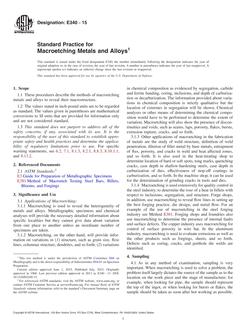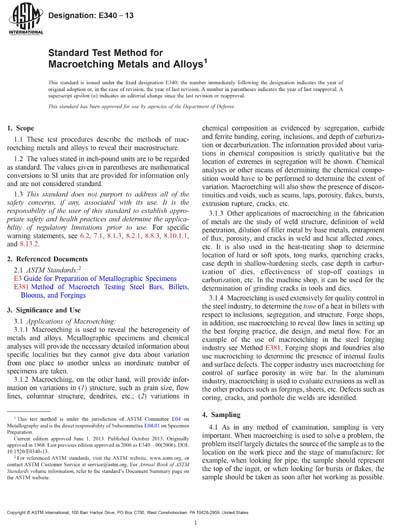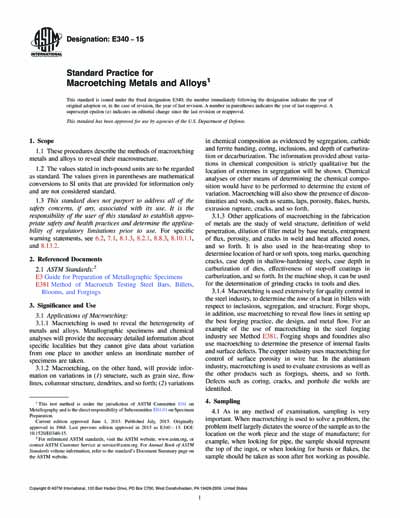Secondly, beryllium does not grind easily; hence, specimens should be as small as possible to minimize grinding time. Occasionally an intermediary etchant may be required. Rinse in water, and remove smut in strong HNO3 solution. High-Ni alloys As above. Bright etch, grain structure, defects. If the specimen is then given light regrinding to remove the rough etched surface, the second etch will provide good results. Fine-grained metal may not give good results in either case. 
| Uploader: | Mom |
| Date Added: | 5 April 2018 |
| File Size: | 57.78 Mb |
| Operating Systems: | Windows NT/2000/XP/2003/2003/7/8/10 MacOS 10/X |
| Downloads: | 1082 |
| Price: | Free* [*Free Regsitration Required] |
Evaluation of machined parts for grinding cracks in tools and dies. Cut-off wheels with the designation C46FR70 have been the most successful. When examining for surface defects, the surface itself should be etched directly without much preparation. Forging shops and foundries also use macroetching to determine the presence of internal faults and surface defects.
The best results are xstm by grinding. Rinse in hot water and dry. It is the responsibility of the user of this standard to establish appropriate safety and health practices and determine the applicability of regulatory limitations prior to use. When the structure has been suitably developed, rinse the specimen, either with a swab saturated with water, or better still, by pouring water over the specimen. Chemical analyses or other means of determining ashm chemical composition would have to be performed to determine the extent of variation.
Etching should be done under a fume hood, with the proper precautions for the use of HF. If you feel that your comments have not received a fair hearing you should make your views known to the ASTM Committee on Standards, at the address shown below. All three of these require very careful specimen preparation. Occasionally an intermediary etchant may be required.

After the initial wetting, keep the swab saturated with solution and frequently sweep over the surface of the specimen to renew the solution. Contact our sales team to assist in specification review or a cost estimate for your testing. All these methods will cause cold work at the surface and will generate astj. Low-Ni alloys Grain structure. Same as for reagent No. Replaces portions of Method E 3.

Forge shops, in addition, use macroetching to reveal? Flow pattern in forgings.

Details of the procedure not discussed E 2 here are covered in the sections for the various metals and their alloys. The copper industry uses macroetching for control of surface porosity in wire bar.
Forgings may also be cut parallel to the long dimension to show? Etching should be done in a well-ventilated room, preferably under a fume hood. For an example of the use of macroetching in the steel forging industry see Method E In fact, the progress of etching should be closely watched and etching stopped when the preferred structural details have been revealed.
Disks from large blooms are sometimes cut into smaller pieces for ease in handling. Pt and alloys Electrolytic, 6V, few minutes. Comments and Use Grain contrast.
Astm e340 PDF
A number in parentheses indicates the year of last reapproval. Rinse and repeat etching if necessary.
The values given in parentheses are mathematical conversions to SI units that are provided for information only and are not considered standard. The specimen or specimens should be placed in a tray of stainless steel screen or on some non-reactive support.
Macroetching Examinations - ASTM E & ASTM E Testing | SGS MSi Testing
Wet silicon carbide papers have proved satisfactory provided they are used with sufficient pressure to effectively cut the sample and are not used after they become dull or worn. Sectioning into shorter lengths may be advisable. An ideal length would be the circumference of the last roll, astk this may be inconveniently long.

No comments:
Post a Comment